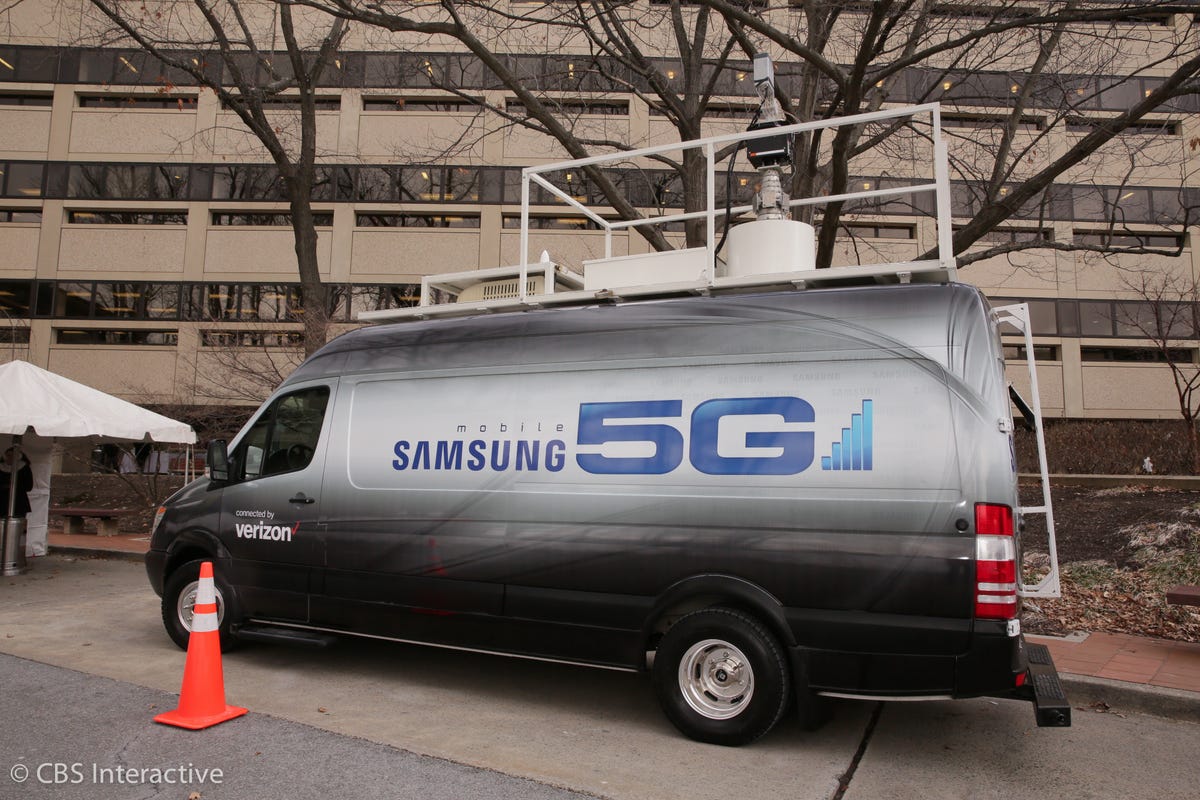
Check out Verizon's '5G phone'
The marquee part of Verizon's field trial is the van, which represents a "5G mobile device." The van drove about 10 miles an hour around the parking lot of the Verizon building, demonstrating how it could pick up 5G signals sent from a nearby base station.
A big antenna for a big signal
A bulky antenna is mounted atop the van, which was created in partnership with Samsung. It makes for a conspicuous ride around the parking lot.
The 5G source
Providing the signal was a small base station located on one of the many balconies of the Verizon building. It fired off a signal with a range of about 1,000 feet.
Receving the signal at the other end
Besides the van, a second receiver was located across from the base station inside another office in the Verizon building.
Going through brick walls
The receiver is angled slightly so a brick wall partially obstructs the signal. 5G signals run on very high frequency airwaves, which don't have much range and get distorted easily. Verizon and Samsung said they've been able to get through one wall, but a second or third remains a problem.
Firing off the 5G signal
On top of the base station was the radio antenna, which can shoot off multiple 5G signals in different directions. It's a trick called beam forming, which helps get the airwaves around obstructions like metal.
Inside a 5G device
The van is blacked out from the inside. The only thing you can see is the large flat-screen display showing the speed of the connection. It peaks at 3.77 gigabits a second, or 377 times faster than your average LTE connection.
Superspeedy 5G
The receiver is able to get a consistently fast signal. But wave your hand in front of it, and the signal drops. That's just one of the complications Verizon and its partners will have to plan around.
Up close and personal with the base station
The base station is hooked up to a fiber-optic cable, which supplies the unit with its superfast Internet connection.

